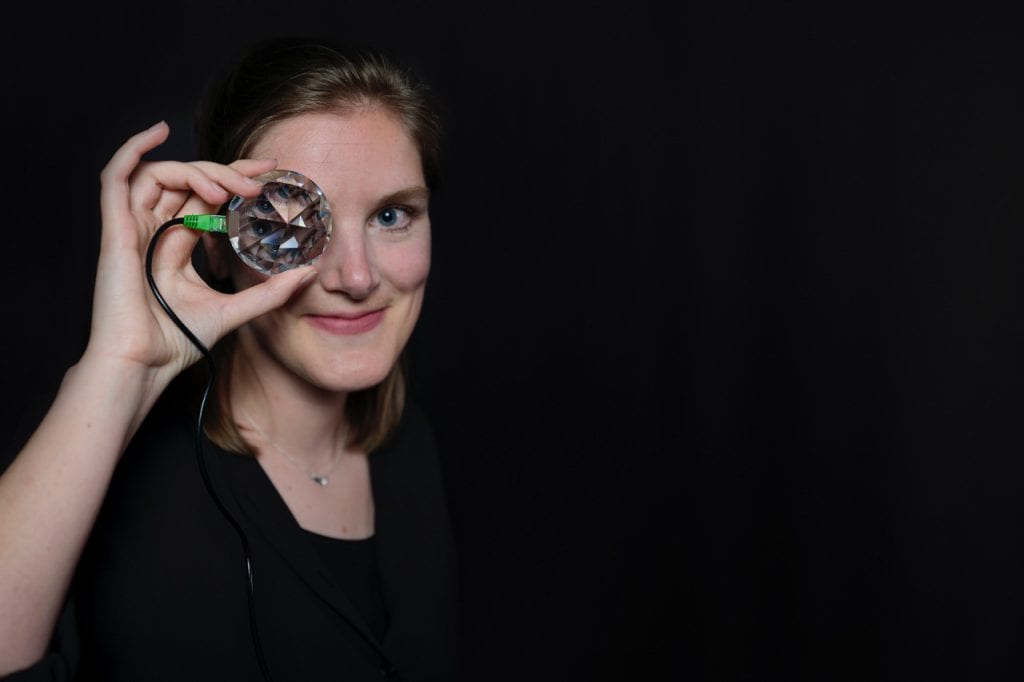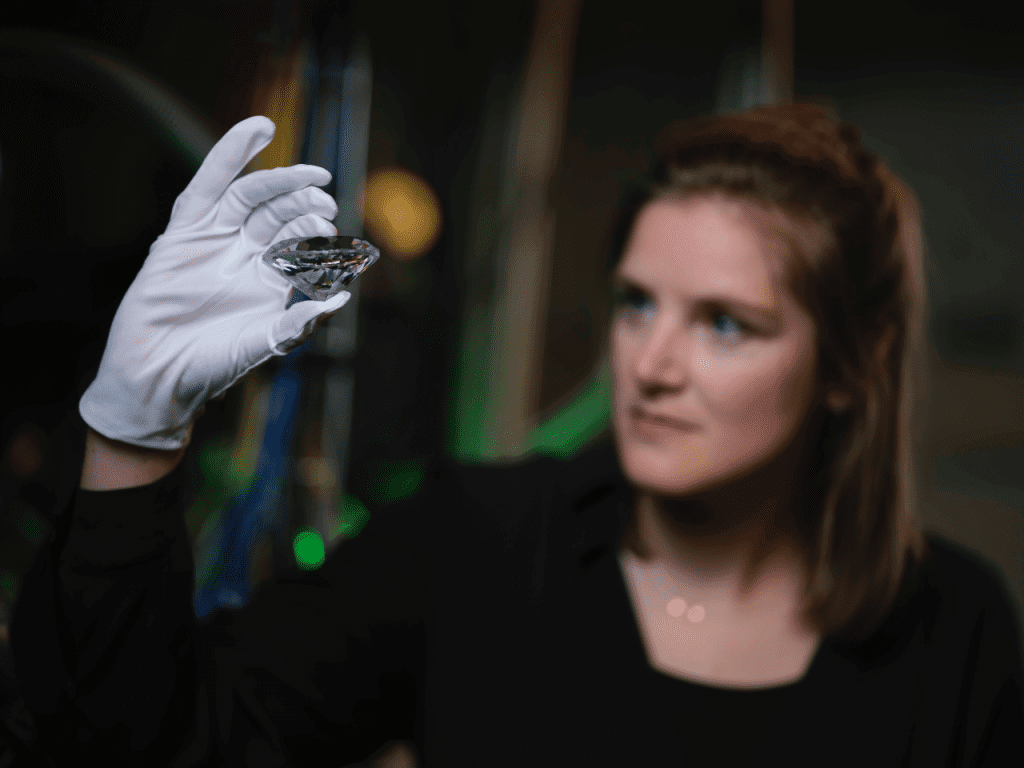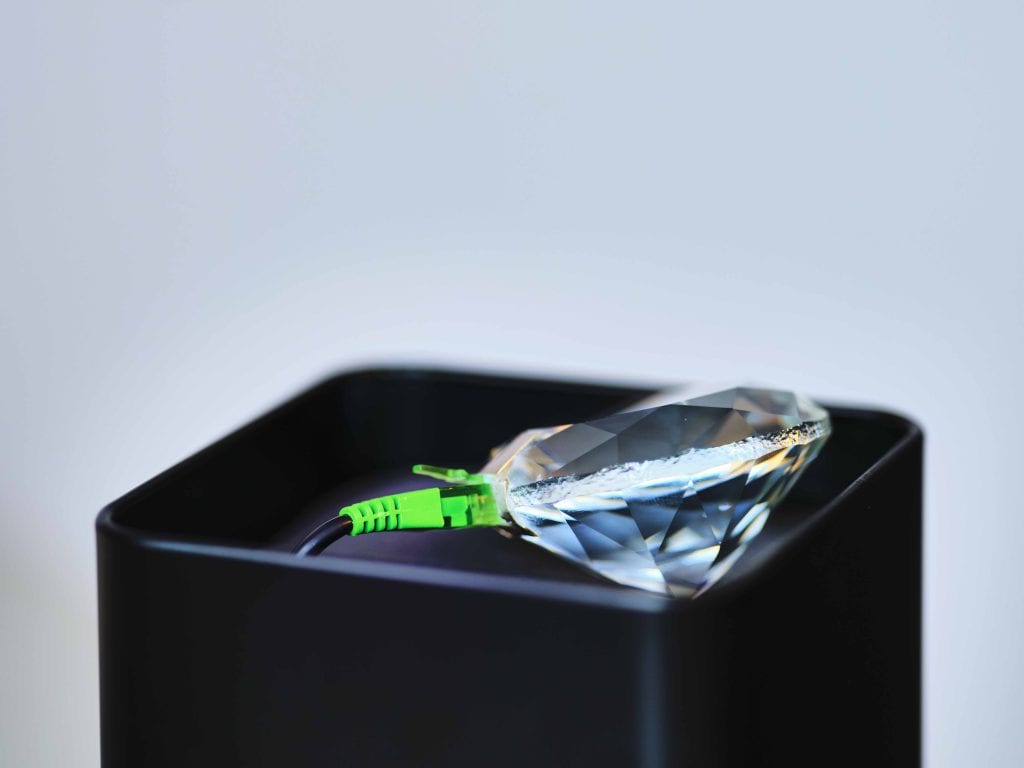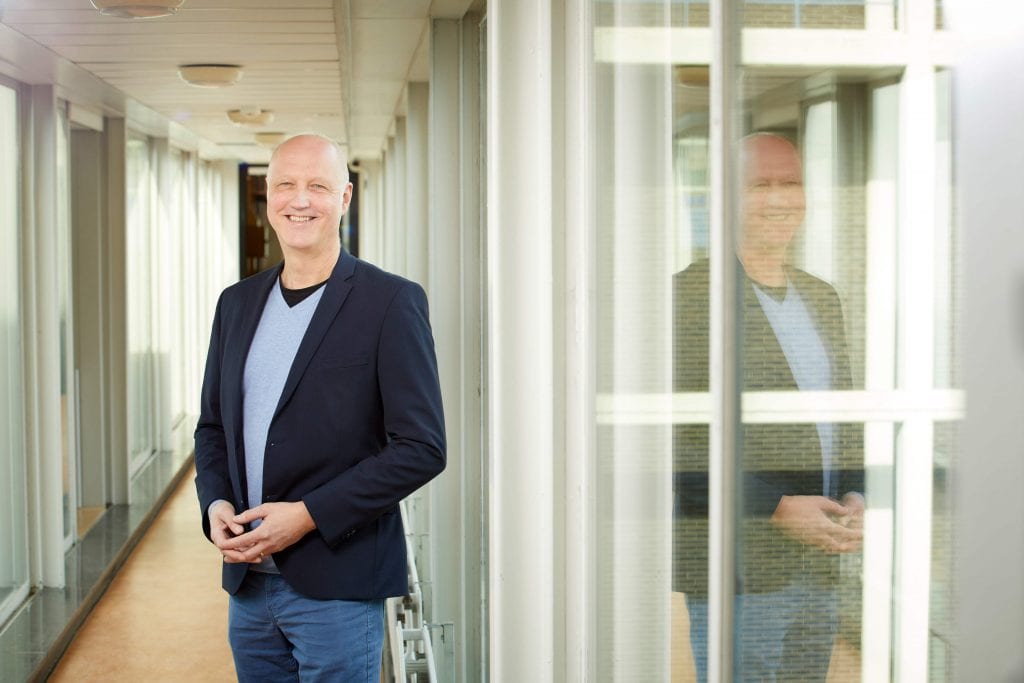Stories of Quantum
Diamonds are a researcher’s best friend

A fundamentally secure and private internet connection? That is exactly what Sophie Hermans from QuTech is working on. Recently, she and her colleagues have reached a new milestone on the way to the quantum internet – by using diamonds.
If you use online banking, or send a confidential email to your boss, it goes without saying that you don’t want anyone else to read along. With a quantum internet you can use a connection which is fundamentally secure, no one would be able to listen in unnoticed.
But a quantum internet can do more. “By using a quantum internet you can link multiple quantum computers and combine their computational power. You can perform calculations in the cloud, for instance to develop new medicines, and it is possible to do so with full privacy. Things that are impossible nowadays” says Sophie.
Connected without a direct connection
Sophie and her colleagues recently reached an important milestone in their quantum internet research, now published in Science. They succeeded in connecting three nodes, to build the world’s very first quantum network. Sophie: “A normal computer bit, used to perform calculations, is always a 0 or a 1. Quantum bits (or ‘qubits’) – the building blocks of a quantum computer – are different because they can be both 0 and 1 at the same time. Also, it is possible to entangle multiple qubits, and once entangled the qubits will always give the same outcome when you measure them. In this way you can detect if someone tries to listen in.”
Linking three nodes together sounds simple, after all billions of devices worldwide are already connected via the internet. But it isn’t that easy for the quantum version since the technology is still in the early development stage.
“Linking three nodes together sounds simple, after all billions of devices worldwide are already connected via the internet. But it isn’t that easy for the quantum version since the technology is still in the early development stage.” Sophie and her team use three nodes: Alice, Bob and Charlie (A, B and C). “We have connected them via glass fibers. Bob has a connection with both Alice and Charlie, but Alice and Charlie have no direct connection. In the network we can entangle different bits, for example all the qubits on all three nodes. But also, all possible combinations of any two parties. With the help of Bob, we can entangle Alice and Charlie even though they don’t have a direct connection to each other. And even in this case, Bob cannot overhear Alice and Charlie without them noticing!”
You can compare this to the current internet according to Sophie. “When you send me an email, our computers are not directly connected to each other with a single cable, but the connection goes via routers and modems. We showed that for a quantum internet you also don’t need direct connections only.”

Diamonds
Remarkably, diamonds played a key role in these experiments. So, in this case, diamonds really are a researcher’s best friend. “We use pieces of diamond as a kind of packaging material. Within the diamonds we look for small defects, a kind of imperfections. Such a defect misses a few atoms in the crystal structure, or they are replaced by other types of atoms. We can measure and study these defects with specialist equipment, and the electrons within these defects are our qubits, which we use for our experiments.”
The diamonds are not like to ones you might buy from a jeweler. Sophie: “These are not natural gems – they are made in laboratories. In this way we can regulate how many defects there are and what properties the diamond has. You don’t need a full-blown gemstone factory, because a small piece is enough for us. It’s elegant that the technology of the future uses something that in principle occurs in nature.”

It’s elegant that the technology of the future uses something that in principle occurs in nature.
Research as a puzzle
This groundbreaking experiment required extensive preparation. The team has spent 2,5 years thinking about all the different parts, preparing and testing them in advance. Sophie: “It’s a kind of puzzle, where you build and check the pieces yourself. Almost everything is new, and that’s very interesting but it also makes it difficult. You don’t always know what you don’t know, and sometimes things work very differently to what you expect. My professor tells us we cannot call these ‘problems’, instead we need to call them ‘challenges’. It’s true that when something doesn’t quite go as expected, it’s annoying at first. But it’s very rewarding when you find out why and how it works and come up with a solution. You have to be very patient for this work, with a lot of perseverance.”
It’s a kind of puzzle, where you build and check the pieces yourself. Almost everything is new, and that’s very interesting but it also makes it difficult.
It is also imperative to be flexible. In her spare time, Sophie likes to play board games, such as Catan: “You have to think strategically here too. You constantly make plans, but then adapt to circumstances and to what the opponent is doing – working with what you have and trying to expand it. Such a board game is actually comparable to how we work in the lab. You make plans, if it turns out to be different, then you choose a new strategy, and finally you repeat the process until you succeed. It’s one of the reasons why my work on the quantum internet never gets boring.”
Text: Robert Visscher | Photography: Frank Auperlé

